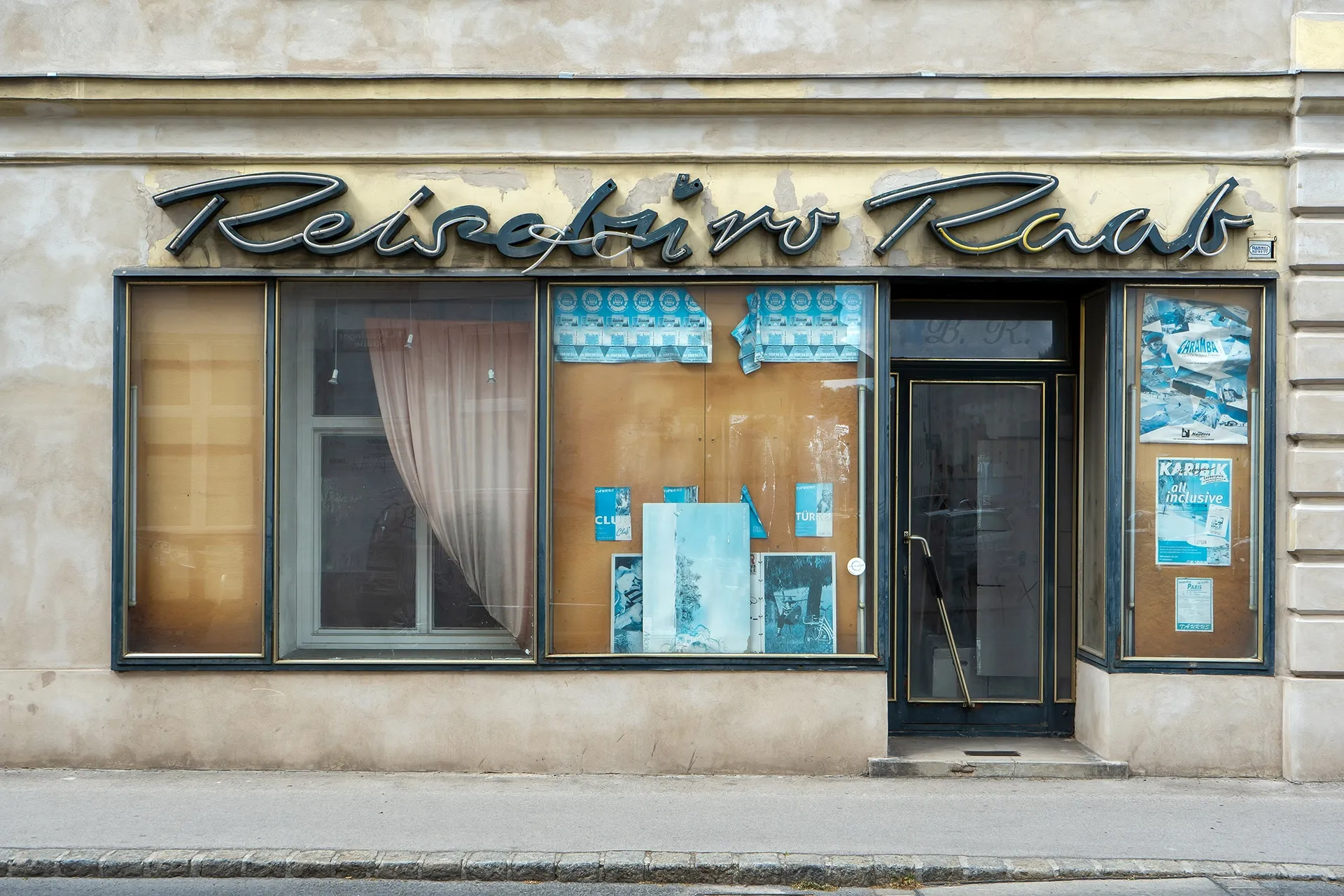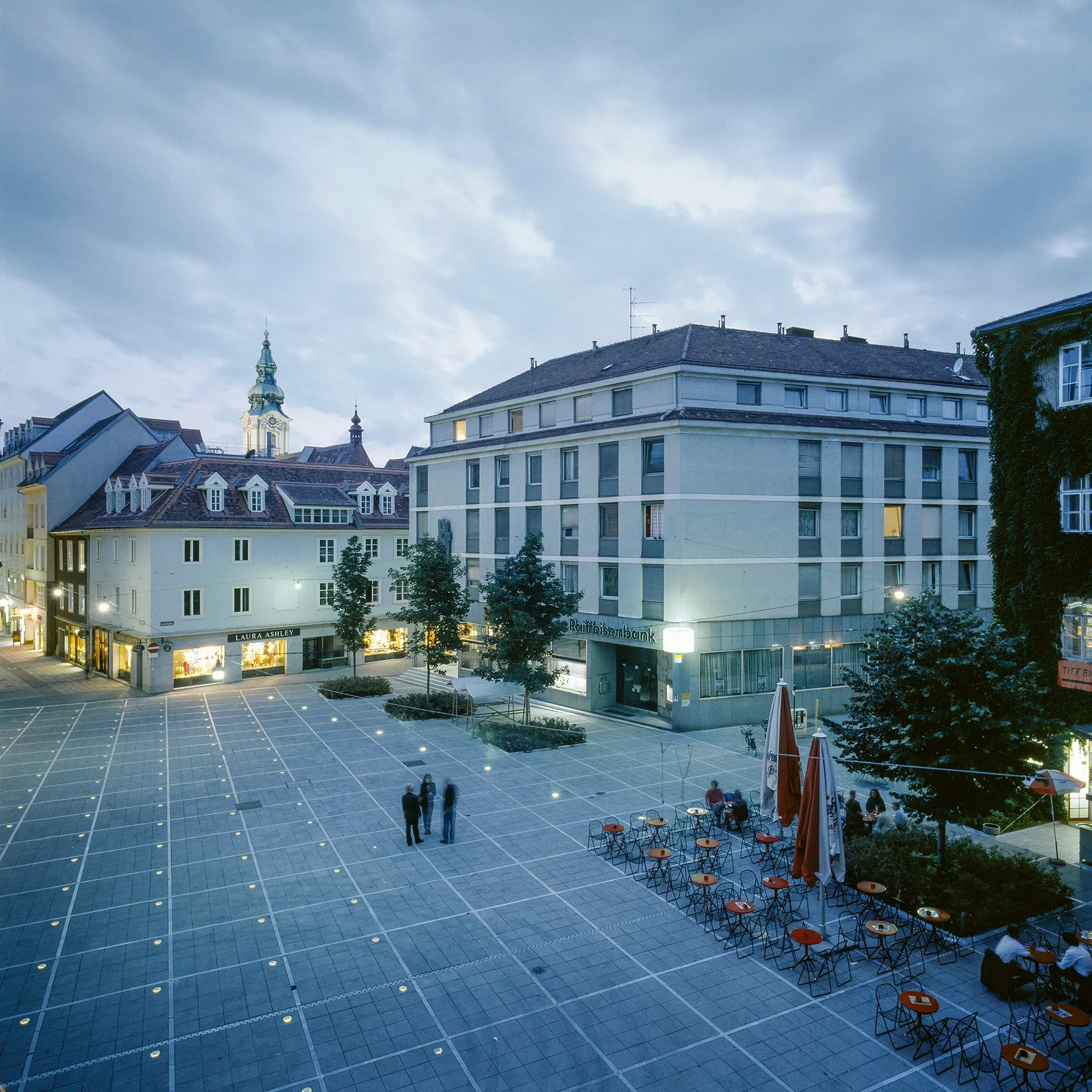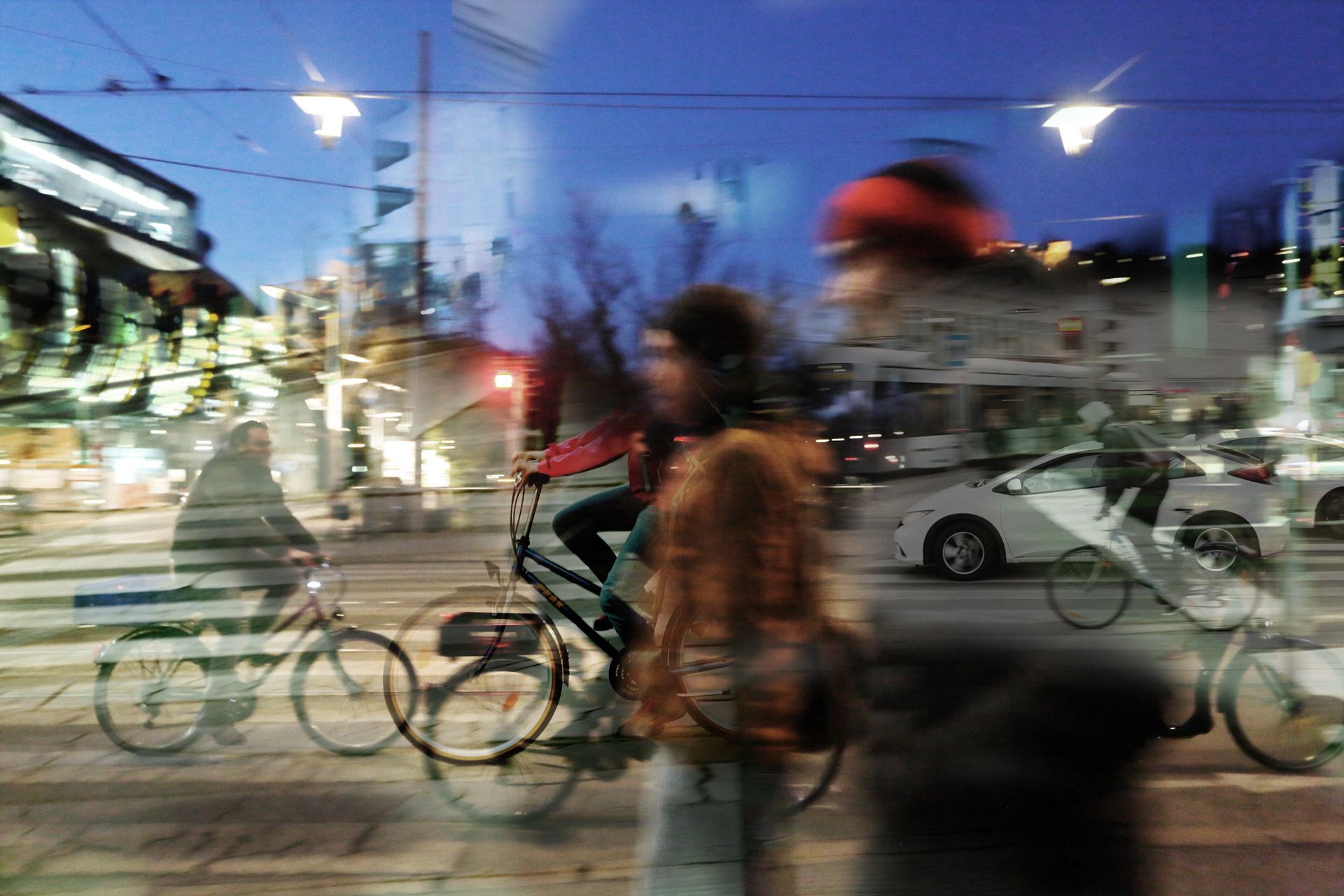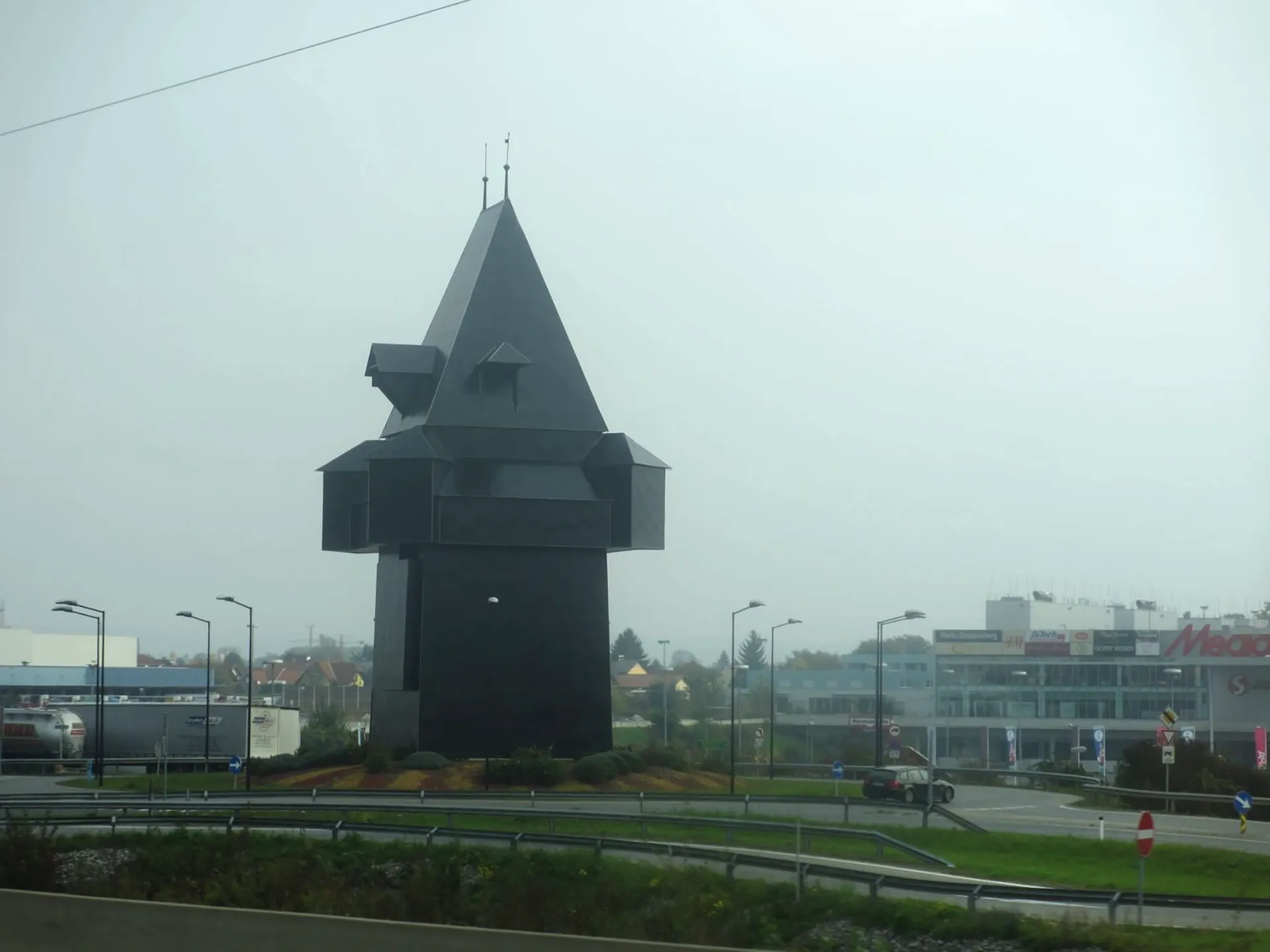Use vacant properties!
Vienna is growing, yet at the same time, spaces for living, culture, education, and commerce remain vacant. In the fall of 2024, a broad alliance of Viennese and nationwide architectural and cultural institutions organized a three-part discussion series entitled "Utilize Vacancies! Ways to activate vacant properties in Vienna." The discussion series was accompanied by considerable media interest and, in the run-up to the 2025 Vienna state and municipal elections, placed the recording and use of vacant properties in Vienna on the political agenda. The discussion series is based on a catalog of demands that summarizes numerous measures for activating vacant properties in Vienna
Use vacant properties!
- Published in
- Author
Fabian Wallmüller
- Published
15.04.2025
- Photography
© Georg Scherer/ Wienschauen

The three-part discussion series ‘Leerstand nutzen!’ (Use vacant properties!), held in autumn 2024, placed the recording and use of vacant properties in Vienna on the political agenda in the run-up to the 2025 Vienna state and municipal elections. Photo: © Georg Scherer
“The greatest contribution to climate protection can be achieved by continuing to use existing residential buildings instead of constructing new ones.” This is the Climate Council's most important recommendation for the construction sector. The reasons for this are obvious: if a building stands empty, new buildings have to be constructed in a growing city like Vienna – preferably on the outskirts. This not only seals off green space and generates a lot of CO2, but also costs a lot of money, twice over. On the one hand, new construction is more expensive than using existing buildings, partly because infrastructure pipes and public transport have to be installed in new development areas. On the other hand, these same infrastructures are maintained at great expense in the existing city, but are underutilized. These are double costs that are borne by the general public and drive up rents – for residential use, but also for non-residential use. When buildings stand empty, public spaces also suffer: they become desolate and less safe.
The use of vacant space is therefore not only an important contribution to climate protection, it also saves costs and thus becomes an important lever for efficient public spending, affordable housing, and affordable spaces for cultural groups, civil society initiatives, education, and small businesses. Using vacant space, especially on the ground floor, makes public spaces more attractive and thus also contributes to social sustainability.
Vienna lagging behind
The use of vacant properties is therefore a topic of great public interest. This makes it all the more surprising that politicians and city administrators in Vienna have been avoiding this topic for years. Vacancy surveys and vacancy taxes have long been common practice in Styria, Salzburg, Tyrol, and Vorarlberg—but not in Vienna. In Vienna, the vacancy rate in residential buildings alone is estimated at up to 10%, with no more precise figures available. Why? No reasons are given for this, which is also a problem, as it fuels the rumor mill.
With a constitutional amendment in spring 2024, the federal government transferred the right to levy a higher vacancy tax to mobilize housing to the federal states. Vienna has not made use of this right to date. The financial damage this causes to the general public is considerable and is growing every day.
Use vacant properties!
In the fall of 2024, a broad alliance of Viennese and nationwide architectural institutions organized a three-part discussion series entitled “Use vacant properties! Opportunities for activating vacant properties in Vienna.” [1] Significantly, the discussion series took place in the ballroom of the old WU in Vienna—a building designed by Karl Schwanzer that is still in temporary use today but is threatened with demolition. The aim of the discussion series, which attracted considerable media interest, was to place the recording and use of vacant properties on the political agenda in the run-up to the 2025 Vienna state and municipal elections.
In three panel discussions, experts from politics, administration, architecture, real estate development, research, and interest groups discussed the recording and use of vacant properties in Vienna based on three types of vacancy: “Vacancies in residential buildings” on October 23, “Vacancies on the ground floor” on November 8, and “Vacancies in commercial buildings” on November 27.
The panel discussions were preceded by a closed-door dialogue event held in September, at which experts from administration, urban planning, architecture, culture, research, and interest groups, as well as activists, developed consensual demands for the recording and activation of vacant properties in Vienna. The demands were summarized in a catalog of demands, which formed the basis for the subsequent panel discussions.
Numbers, please!
So what are these demands? First and foremost, the list of demands calls for a definition of the term “vacancy” for Vienna. Unlike in Styria, Salzburg, Tyrol, and Vorarlberg, there is still no consensus on this issue in the federal capital. Following the example of the aforementioned federal states, apartments in Vienna for which no residence registration has been submitted for more than six months of the year could also be defined as “vacant.” [2] However, this would not yet cover all non-residential buildings, as well as forms of underuse and misuse. A comprehensive definition of vacancy would therefore be worthwhile.
The second demand in the catalog is the data-based recording of vacancy as the most important basis for any targeted political discussion on the use of vacant properties. For decades, there has been a lack of valid figures on vacancy in Vienna—or they are simply not published. In the residential sector, the latest register count by Statistics Austria in Vienna shows around 100,000 apartments (10% of the housing stock) without a primary or secondary residence, but even this figure does not allow reliable conclusions to be drawn about the actual vacancy rate. Vacancies should therefore be recorded by linking different data sources: number of apartments, residence registrations, business registrations, energy consumption, waste volumes, sewage volumes, but also AI-supported vacancy detection using aerial photography and infrared imaging, as is currently being tested in Germany. [3] The state of Salzburg, for example, is currently demonstrating that vacancy surveys based on electricity consumption are possible in compliance with data protection regulations.
In addition to the statistical collection of building vacancy data, the introduction of a vacancy reporting requirement, as already exists in Salzburg and Tyrol for apartments, could raise awareness of the significance and public costs of vacancy. A reversal of the burden of proof would also be conceivable: apartment owners would have to prove that they are renting out their property – otherwise they would have to pay a vacancy tax.
Push and pull
The vacancy tax is also the most obvious way to penalize vacancy – Styria, Salzburg, Tyrol, and Vorarlberg are leading the way. In addition, the aforementioned constitutional amendment on the collection of a vacancy tax by the federal states to mobilize housing increases the pressure to introduce a vacancy tax in Vienna as well. In any case, the amount of this tax would have to be discussed: in order to actually mobilize housing, it should be a multiple of the vacancy tax currently levied in the federal states. Currently, depending on the size of the apartment and other factors, this ranges between approximately 100 and 5,000 euros per year [4] – too little, according to many experts. One possibility would be a vacancy tax equal to the market rent plus a location surcharge in order to skim profits from speculation with vacant properties.
In addition to penalizing vacancy, it is also important to create pull factors to mobilize vacant properties. Subsidies and tax incentives would be just as important here as a conversion ordinance, such as the one that has just been introduced in Lower Saxony. A conversion ordinance could define building code exemptions for the conversion or reuse of existing buildings – for example, in terms of room heights, fire protection, and fall protection, but also with regard to room ventilation, sound insulation, accessibility, number of parking spaces, and much more. A new zoning category C (“C” for “commons”) in Vienna's zoning and development plan could create additional relief for the use of existing buildings by non-profit, everyday economic forms. In addition, possibilities for renting vacant public properties below market value for public welfare purposes should be examined – currently still a no-go due to national and EU legal requirements, as renting below market value may be relevant under state aid law.
Package of measures
Vacancy registration, vacancy tax, incentives: It is clear that a coordinated package of measures is needed to effectively record and utilize vacant properties in Vienna. The much-cited administrative effort required for this is not a counterargument in view of the additional costs caused by vacant properties and new construction. Rather, it is important to give vacant properties a positive political image: as a way to achieve an affordable, inclusive, and sustainable city.
Footnotes
[1] The alliance consists of the Alliance for Substance, the Vienna Architecture Center, IG Architektur, IG Kultur Wien, the Austrian Society for Architecture (ÖGFA), and zt: Chamber for Vienna, Lower Austria, and Burgenland. The discussion series “Utilize Vacancies! Opportunities for Activating Vacancies in Vienna” was organized in cooperation with the Faculty of Architecture and Spatial Planning at TU Wien.
[2] In Styria, Salzburg, Tyrol, and Vorarlberg, apartments are considered vacant if no residence registration has been submitted for them for more than six months or 26 weeks per year, see § 8 Styrian Second Home and Vacant Apartment Tax Act (StZWAG), § 9 (Salzburg) Second Home and Vacant Housing Tax Act (ZWAG), § 6 Tyrolean Leisure Residence and Vacancy Tax Act (TFLAG), § 2 (Vorarlberg) Second Home Tax Act (ZAG).
[3] See Martin Putschögl: AI-supported survey reveals more than 40,000 industrial wastelands in Germany, Der Standard, October 11, 2024, www.derstandard.at/story/3000000240105/ki-gestuetzte-erhebung-zeigt-mehr-als-40000-industriebrachen-in-deutschland.
[4] Depending on the size of the apartment and other factors, the annual vacancy tax in Salzburg ranges from €400 to €5,000, in Tyrol from €120 to €5,160, and in Vorarlberg from a minimum of €8.20 per m² (with discounts of over 50% possible under certain conditions) to a maximum of €2,775. In Styria, a maximum of €1,000 may be levied for a 100 m² apartment; for larger or smaller apartments, this amount is increased or reduced accordingly. See § 13 ZWAG, § 9 TFLAG, § 5 ZAG, § 12 StZWAG.
Similar articles
— All Publications
SOS Tummelplatz
In a few days, on 27 June 2023, the "Redesign Tummelplatz" competition will be decided. The jury meeting that decides the competition is probably the last chance to discuss whether the Tummelplatz should actually be redesigned or rather renovated. An appeal to the competition jury.

Project of the century
In December, the Graz City Council is set to decide on the new city tunnel for the S-Bahn. If this democratically legitimised decision on the S-Bahn expansion is accepted, many questions arise regarding the further planning of this once-in-a-century project. The involvement of experts and the public will be crucial to its future viability
